
The Old City’s Jewish Quarter is brimming with history. On our recent visit, we were interested in learning more about Jerusalem’s Sephardic community so we visited the Four Sephardic Synagogues. Although the current structure has been completely restored, the presence of the Sephardic community dates back to the late 13th century during the time of Rabbi Moshe Ben-Nakhman (Nachmanides or Ramban). In the centuries that followed, the community grew and additional synagogues were built according to the Ottoman Empire’s requirement that “no infidel prayer house could stand higher than a neighboring Moslem holy place.” The Jews circumvented that stipulation by having the ground floor below street level.
By the 19th century, the four adjacent Sephardic synagogues had been neglected and intense renovations were warranted. In the process, the four synagogues were merged into one building while simultaneously maintaining their unique architecture. By the end of 19th century, this structure became the spiritual hub for Jerusalem’s Sephardic community.
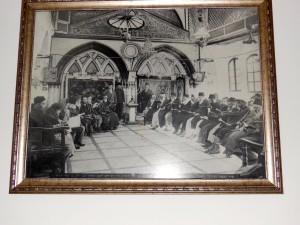
During Israel’s War of Independence, the Jews of the Old City’s Jewish Quarter sought refuge in these synagogues. When the Old City fell into the hands of the Jordanian Legion, the synagogues were destroyed. Thereafter, the Jordanians used this area for livestock stalls. In the aftermath of the Six Day War (1967), Jewish organizations around the world and the Israeli government worked together to restore the Sephardic Synagogues to their former status. Using pictures and drawings, the architects and designers rebuilt the synagogues from the pile of ruble and the fragments of the outer walls. The Four Ancient Sephardic Synagogues were rededicated in 1972.
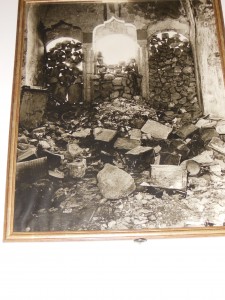
Despite all the twists and turns of history, Jerusalem’s Sephardic community persevered. Like so many other episodes in Jewish history, one has to reflect on the Jewish community’s ability to look toward the future instead of dwelling on former adversities.
We stopped to admire and marvel over the workmanship in each room.
The Qahal Qadosh Gadol (Great Congregation) Rabban Yokhanna ben Zakai (late 16th- early 17 century)
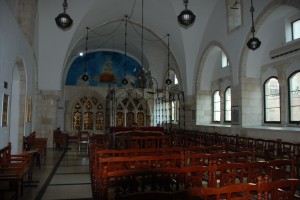
Distinguishing features included two Holy Arks with Gothic-style fronts that are placed against the eastern wall. The center stage (bimah) is elongated with a decorative wrought-iron railing.
Within the walls of the original synagogue was a shofar and an oil jug. An oral tradition was passed from generation to generation that the hidden shofar would be used by the prophet Elijah to announce the coming of the Messiah and that the Messiah would be anointed by the ancient oil.
The Eliahu Hanavi Talmud Torah Congregation (First to be built)
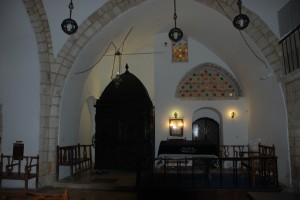
The ceiling has a Turkish-style dome. The benches looked a bit uncomfortable.
The Istambuli Synagogue (Largest and last to be built in the 18th century)
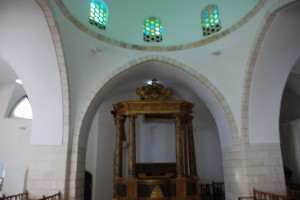
The Emtza’i (Middle) Synagogue Zion Congregation (Smallest and was built in the middle of the others)
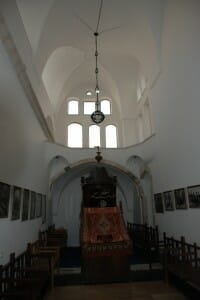
Due to the support of Worldwide Jewry, the Sephardic Jewish traditions will continue to be passed from generation to generation in Jerusalem.
Sandra Bornstein is the author of MAY THIS BE THE BEST YEAR OF YOUR LIFE. It is available on Amazon.
If you enjoyed reading my memoir, consider posting a review on Amazon, Goodreads, and/or AskDavid.com.
Leave a Reply
You must be logged in to post a comment.